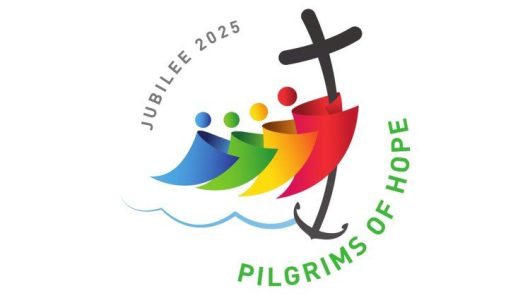Year of Jubilee 2025
Pope Francis holy door
Pope Francis has declared 2025 to be a Jubilee Year, entitled ‘Pilgrims of Hope’ and this year, 2024, is to be a Year of Prayer in preparation.
To mark this, I write below a Letter to Clergy and Laity about what the Jubilee Year is. I also ask everyone this Year to reflect on the ‘Our Father’ and the Seven Spiritual Works of Mercy:
Just as the corporal works of mercy are directed towards relieving corporeal suffering, the aim of the Spiritual works of mercy is to relieve spiritual suffering.
The works include:
- Admonish the sinner. (Give correction to those who need it.)
- Instruct the ignorant. (Share our knowledge with others.)
- Counsel the doubtful. (Give advice to those who need it.)
- Comfort the sorrowful. (Comfort those who suffer.)
- Bear wrongs patiently. (Be patient with others.)
- Forgive all injuries. (Forgive those who hurt us.)
- Pray for the living and the dead.
From Bishop Philip
Dear Friends,
As we embark on the new year 2024, the Holy Father has invited us to prepare for the Jubilee Year of 2025, entitled ‘Pilgrims of Hope’. In his letter promoting the Jubilee Year, Pope Francis recalls the suffering and hardships that many of us experienced during the pandemic. In a time where many countries also suffer the effects of war and the climate crisis, Pope Francis sees the Jubilee Year 2025 as an opportunity to restore hope, a time of renewal and rebirth. The Jubilee Year will begin on 24th December 2024, with the opening of the Holy Door at St Peter’s Basilica and will draw to a close on the feast of Epiphany, January 2026.
In preparation for the Jubilee Year, the Pope has proclaimed this year 2024 to be a year of prayer in preparation. It will focus on that prayer given to the disciples, the ‘Our Father.’ The Our Father not only reminds us that God is our Father but also reminds us of the union we share as brothers and sisters in Christ.
The word jubilee derives from the Hebrew, ‘Jobel’, which means ‘a ram’s horn.’ The instrument would be blown indicating the start of the year. In the Old Testament, for the Israelites, the jubilee was a time of universal pardon. In the Book of Leviticus, the Lord says, “And you shall hallow the fiftieth year and you shall proclaim liberty throughout the land to all its inhabitants. It shall be a jubilee for you: you shall return, every one of you, to your property and every one of you to your family.”
The year was seen as a time to re-establish relationship with God, with each other, and creation. This would see misappropriated land returned to their owners, debts forgiven, Hebrew slaves set free, and a fallow period for the land to recover. In the New Testament, on the Sabbath day in the synagogue at Nazareth, Jesus reads the Jubilee prophecy (see Luke 4:16-21) from the prophet Isaiah (61:1-2) and proclaims that it would be fulfilled through him, “The spirit of the Lord God is upon me, because the Lord has anointed me; he has sent me to bring good news to the oppressed, to bind up the broken hearted, to proclaim liberty to the captives, and release to the prisoners; to proclaim the year of the Lord’s favour, and the day of vengeance of our God; to comfort all who mourn…”
The true jubilee is Jesus Christ himself. While in the jubilee of old slaves were set free from bondage and united with their families and homeland, in Jesus, we are freed from the bondage of sin and death. Jesus unites us to our true family, the family of God (the Church), and to our true homeland, heaven. (Bishop Philip Egan 2024)
Logo for the 2025 Jubilee
The logo shows four figures stylised to indicate humanity coming from the four corners of the earth. They are embracing each other to indicate the solidarity and brotherhood which joins the peoples.
The figure at the head is holding onto the cross. It is not only the sign of the faith which embraces, but also of the hope which can never be abandoned because we are always in need of hope, especially in moments of great need.
It is helpful to observe the rough waves underneath; this indicates that life’s pilgrimage does not always move in calm waters.
Life’s circumstances and the events of the world often demand a greater call to hope and because of this we see that the lower part of the cross has been turned into an anchor which stands out in the wave. As is well known, the anchor has often been used as a metaphor of hope and as a matter of fact, the anchor of hope is the name used in maritime jargon as the name given to the reserve anchor used by vessels involved in emergency manoeuvres to stabilise the boat during storms.
Do not ignore the fact that the image demonstrates that the pilgrim’s journey is not individual, but communal and marked by a growing vitality leading one always closer to the cross, which is itself by no means static, but also dynamic. It turns towards humanity, not leaving it alone but going out and meeting it to offer it the certainty of its presence and the sureness of hope.
Finally, the motto of the 2025 Jubilee Year:
Pilgrims in hope, is very visible in green.



